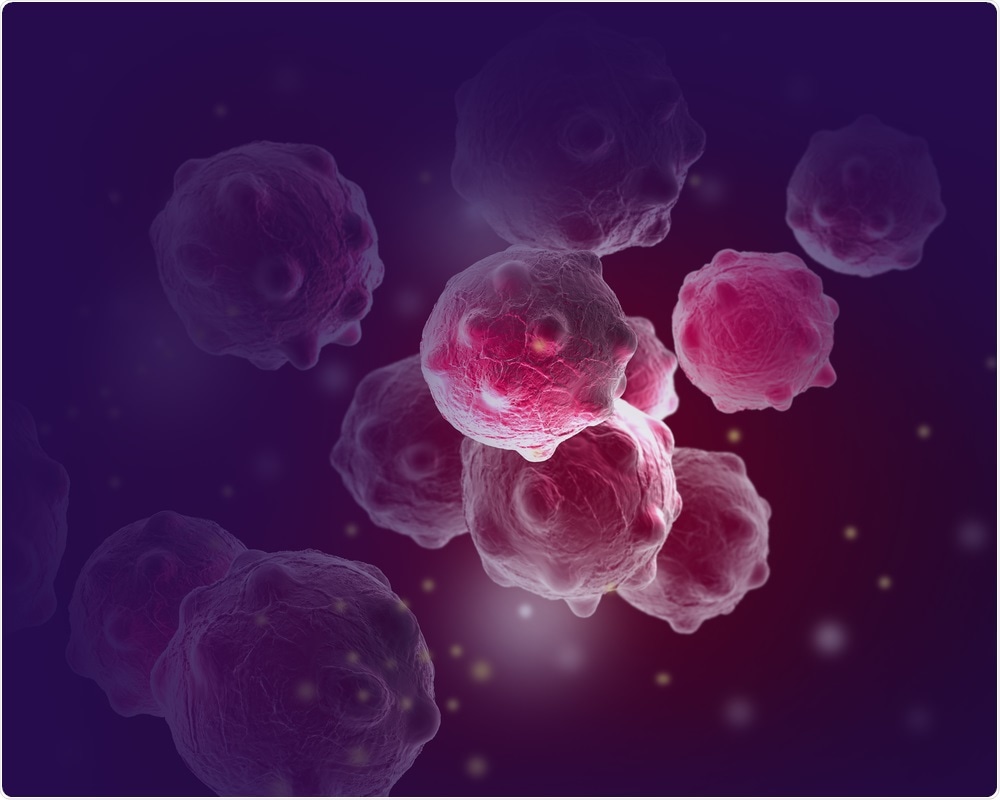AZoLifeSciences speaks to Dr. Vidhi Pareek about her team's research that led to discovering evidence of the metabolon's existence.
Researchers have been investigating the ‘metabolon’ for over 40 years. What provoked your research into this?
Steve has been studying different aspects of the de novo purine biosynthesis (DNPB) since the early 1980s when even the concept of a metabolon did not exist.
With very basic research tools at their disposal, Benkovic and coworkers found preliminary evidence for the interaction of some of the DNPB pathway enzymes in vitro.
As new genetic tools and high-resolution fluorescence microscopy became accessible, using fluorescent chimeric enzyme constructs, the lab showed that the DNPB pathway enzymes form cytosolic punctate that harbor multiple DNPB enzymes and these structures were termed purinosomes.
It was hypothesized that purinosomes represent a metabolon, although we did not yet have any direct evidence for it.
Large protein complexes have been discovered in many systems, but we do not know if these complexes represent an active metabolon, because all too often, such punctate structures represent misfolded/inactive/aggregated/degraded protein, storage bodies, or an artifact of protein overexpression.
It was this frustration of not knowing what these punctate structures represented that stimulated us to find the answer ourselves.
Can you describe what a ‘metabolon’ is?
As first conceptualized by Paul Srere in the early 1980s, a metabolon is an assembly of sequential enzymes of a pathway that leads to intermediate channeling and increased metabolic flux.
These membrane-less biosynthetic compartments restrict intermixing of the intermediates with the bulk cytosolic volume, leading to their efficient utilization in the consecutive reactions in the pathway.
What imaging technique did you use to observe the metabolons? What was this technique used?
We employed a 3D chemical imaging technique, called the gas cluster ion beam- secondary ion mass spectrometry or GCIB-SIMS, which allows ionization and detection of metabolites from a small volume of a frozen cell sample.
The primary ion beam focused to 1μm can reveal the biomolecular composition of a voxel as small as 1μm x 1μm x 300nm. Combined with a multi-layer analysis, one can essentially image through the whole cell. Just as fluorescence imaging reveals the spatial distribution of fluorescent molecules, mass spectrometry imaging reveals the spatial distribution of any ionizable biomolecules.
Being the loci of purine de novo biosynthesis, purinosomes are expected to have a high concentration of the intermediates and end products of the pathway, compared to the rest of the cytosolic bulk. High-resolution GCIB-SIMS imaging is the only technique that could allow us a peek into the cell while preserving the ‘native’ biomolecular distribution.
The recent advancements in the technique and the expertise of our collaborators, Hua and Nick held the key to successful visualization of these microscopic biochemical factories inside cells.
What is the role of a ‘purinosome’?
The formation of purinosomes leads to a rapid and efficient synthesis of purine nucleotides. It is a dynamic assembly of enzymes and we believe that this may be one of the ways the cell regulates metabolic flux and avoids wasteful synthesis of the intermediates when not required.
While we do not completely understand the mechanisms that lead to the formation and dissolution of the complex, it is likely that the cells have a sensor for its purine supply and demand.
Any imbalance in the supply may trigger a signal leading up to the formation of purinosomes to restore the equilibrium.
Is it beneficial for enzymes to work in clusters? Why is this?
Inside cells, many factors including, enzyme and substrate concentrations and stability, availability of cofactors, and division of a single substrate between competing pathways can affect the metabolic flux of a biosynthetic pathway.
Enzyme clustering overcomes these barriers resulting in an increased rate of synthesis and it may be a means for spatial and temporal regulation of pathway flux.
How could your research help to disrupt the progression of cancer?
Cancer cells undergo significant metabolic rewiring to fulfill altered metabolic demands. Preliminary studies suggest the involvement of purinosomes as a source of DNPB in cancer cells.
Our studies may uncover yet unappreciated vulnerabilities that can be therapeutically exploited.

Image Credit: jovan vitanovski/Shutterstock.com
What further research needs to be carried out before a drug could be developed?
Our current knowledge about the purinosome composition and organization, underlying mechanisms that lead to its formation and regulation; and how the accessibility of and response to drugs changes when enzymes organize into these membrane-less assemblies is limited.
We have only solved one puzzle and there is much more to be investigated before we can exploit purinosomes for drug discovery.
What are the next steps in your research?
Our lab is investigating different aspects of purinosome composition, organization, and regulation. Combining different skill sets and techniques we hope to gain insights into the role of purinosomes in physiological processes and in cancer.
Where can readers find more information?
- G. K. Smith, W. T. Mueller, G. F. Wasserman, W. D. Taylor, S. J. Benkovic, Characterization of the enzyme complex involving the folate-requiring enzymes of de novo purine biosynthesis. Biochemistry 19, 4313-4321 (1980).
- S. An, R. Kumar, E. D. Sheets, S. J. Benkovic, Reversible compartmentalization of de novo purine biosynthetic complexes in living cells. Science 320, 103-106 (2008).
- L. J. Sweetlove, A. R. Fernie, The role of dynamic enzyme assemblies and substrate channelling in metabolic regulation. Nat Commun 9, 2136 (2018).
- A. M. Pedley, S. J. Benkovic, A New View into the Regulation of Purine Metabolism: The Purinosome. Trends Biochem Sci 42, 141-154 (2017).
- A. Zhao et al., Transiently transfected purine biosynthetic enzymes form stress bodies. PLoS One 8, e56203 (2013).
- D. L. Schmitt, Y. J. Cheng, J. Park, S. An, Sequestration-Mediated Downregulation of de Novo Purine Biosynthesis by AMPK. ACS Chem Biol 11, 1917-1924 (2016).
- P. A. Srere, The Metabolon. Trends Biochem Sci 10, 109-110 (1985).
- V. Pareek, H. Tian, N. Winograd, S. J. Benkovic, Metabolomics and mass spectrometry imaging reveal channeled de novo purine synthesis in cells. Science 368, 283-290 (2020).
- N. Winograd, Gas Cluster Ion Beams for Secondary Ion Mass Spectrometry. Annu Rev Anal Chem 11, 29-48 (2018).
About Dr. Vidhi Pareek
Dr. Vidhi Pareek was born and brought up in Jaipur, India, and received schooling and early education there.
She completed a BSc in Chemistry/Zoology/Biotechnology. She then moved to Bangalore, India for higher studies in 2005 when she was selected in the MS Integrated Ph.D. program at the Indian Institute of Science, Bangalore.
Dr. Pareek carried out her MS (research) in Biology and decided to pursue Ph.D. to study biochemical and structural aspects of enzymes in the Molecular Biophysics Unit, Indian Institute of Science, Bangalore.
She joined Prof. Benkovic’s group as a Post Doc in the Summer of 2016 and was appointed as an Assistance Research Professor in 2019.